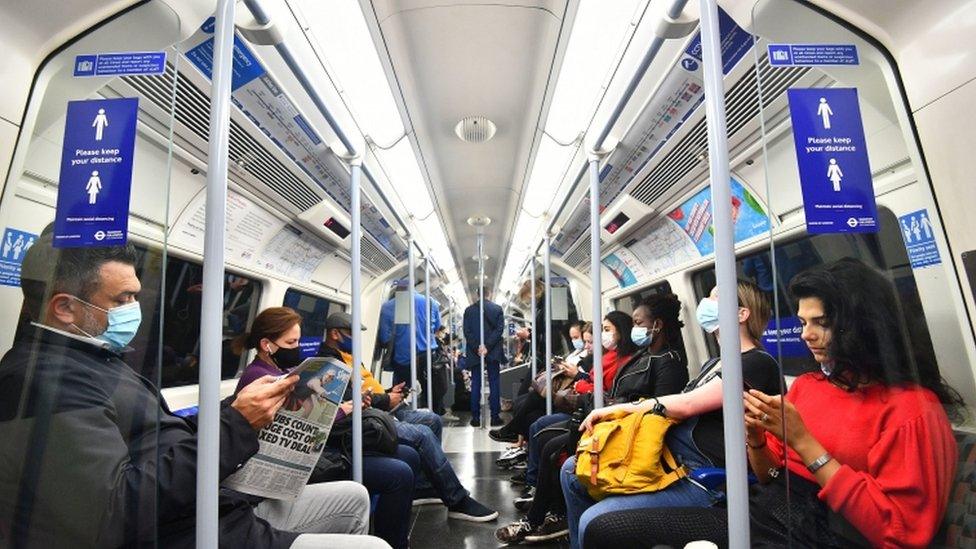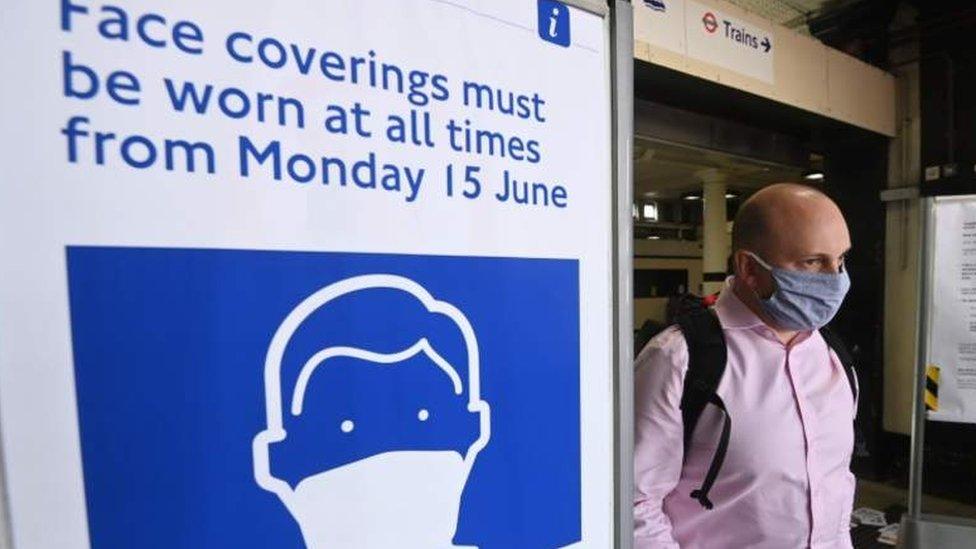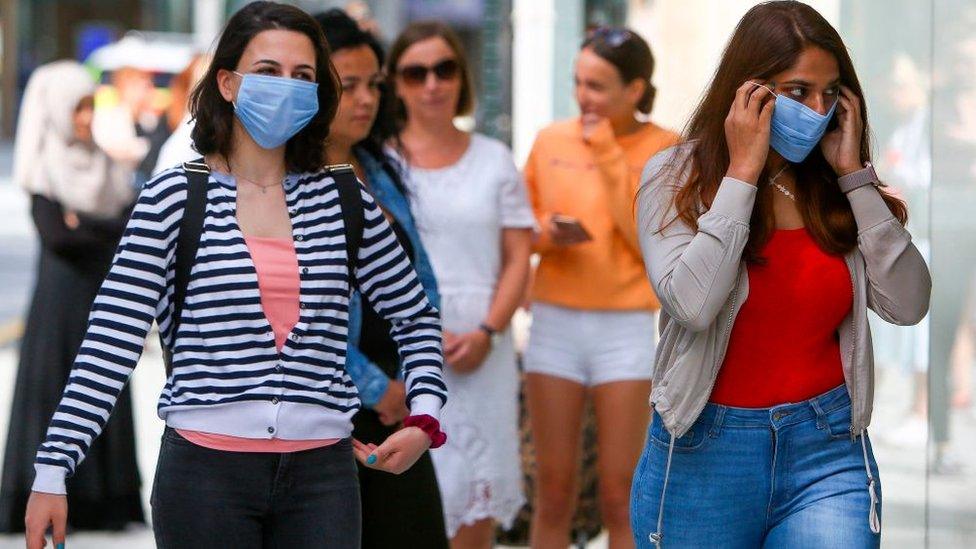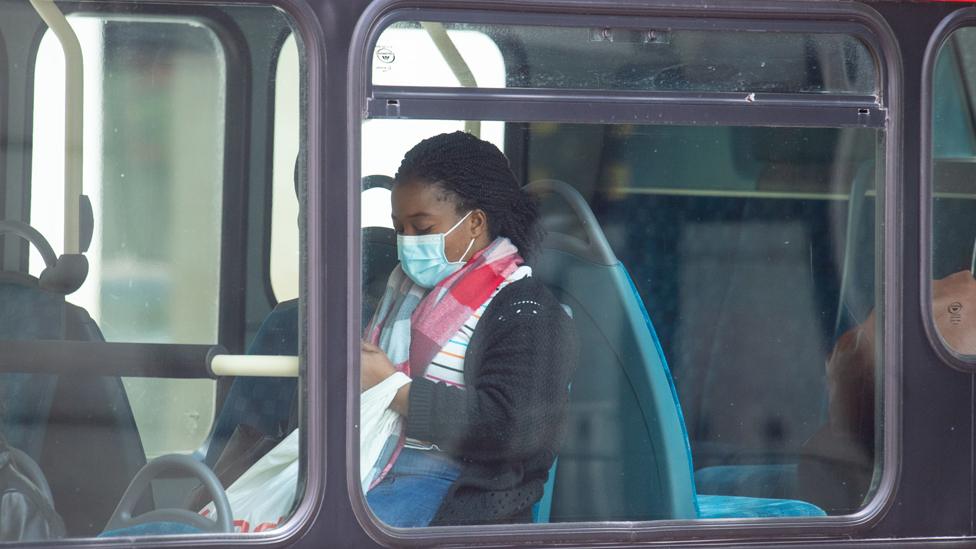How travellers are adapting to London's new commute
- Published
- comments

Workers have been encouraged to return to work and use public transport
Slowly and gradually, it seems passengers are returning to public transport albeit that their confidence may be fragile.
The latest figures from Transport for London (TfL) for this Monday (7 September) show before 10:00 BST, 700,000 people used the Tube - that is up 10% on the previous week, and 32% of pre-lockdown levels.
On the buses, before 10:000 BST 910,000 travellers used them - up 20% on the previous week and an increase of 54% of lockdown levels.
TfL say some of the increase has come from Zip card use, ie more schoolchildren using the system.
What is also striking is how travel patterns have changed.

Around 800 sanitizer units have been put up across the London Underground network to help reduce the spread of Coronavirus and other illness causing germs
TfL says 20% of its travellers have re-timed their journeys away the peak. In fact the peak has flattened and people have moved to travel across the day.
The rush hour also seems to have moved earlier. TfL says the quiet time to travel is between 08:15 and 16:00, and after 17:30 on weekdays. And before noon and after 18:00 on the weekends.
Transport companies are trying to build confidence with extra cleaning and social distancing but there are many who still will not want to travel on public transport.

Before the coronavirus pandemic Canary Wharf was one of London's busiest Tube stations
Train companies like Great Northern also say they have seen an increase in leisure travel. At the weekend, their services are running at 50% of pre-lockdown levels.
On weekdays, commuters are only returning at 35%. Train companies are now looking at shifting their trains as they too have seen demand flatten across the day. There are also calls for more flexible fares to reflect the changes in how people get around.
TfL and local councils have tried to encourage cycling and walking.

The number of people on buses in London has been reduced
Extra bike lanes have gone in as well as the Low Traffic Neighbourhoods (LTNs), which stop through traffic going into residential areas by blocking motor traffic with signs and planters.
If there is one policy which seems to attract opposition, it is LTNs.
The reason they have been brought in, with central government funding, is through traffic can blight residential streets.
In Bowes in north London, I've seen streams of traffic from the north circular diverted onto a residential road by sat navs like Waze.

Face coverings have been mandatory on public transport in England since 15 June
Many who live within the new zones love them as they create quiet spaces. But others do not and fear there is traffic displacement onto surrounding roads.
Opponents also do not like the fact they have to make slightly longer journeys if they live in the zone. Supporters say LTNs are an effective way to cut traffic and pollution within them and encourage cycling and walking.
What is also true is London's commuters are very receptive to messaging. It happened in 2012 during the Olympics Games and it is happening now.
Commuters seem to adapt whether that is shifting to different modes, shifting times or travelling less and working more from home.
The question now is what will happen if the infection rate increases? Will the gradual return stall?
- Published4 August 2020

- Published3 August 2020

- Published15 June 2020

